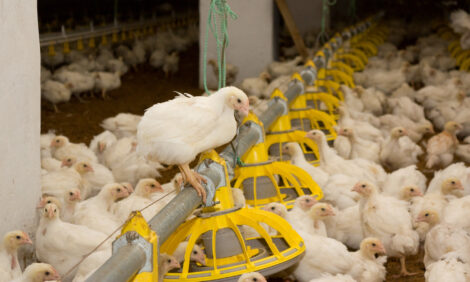



CME: WASDE Estimates Likely to be a Mixed Bag
US - USDA’s Crop Production and World Agricultural Supply and Demand Estimates for March, to be released this morning, will likely be a mixed bag, write Steve Meyer and Len Steiner.
The key items of interest will be revisions
in usage numbers that impact U.S. year-end carryout stocks of corn,
soybeans and wheat as well as changes in corn and soybean production estimates for Brazil and Argentina. General expectations are for
year-end domestic stocks to decline slightly (due to higher U.S. exports) and for estimates for South American crops to decline.
The next critical report from USDA, of course, will be the
Planting Intentions report on March 30. Most expectations for U.S.
corn acres are in the 94 million range while we have seen expected
soybean acreage figures anywhere from 73 to 76 million acres.
USDA’s Baseline Projection figures were 94 and 74 million acres for
corn and soybeans, respectively.
Since December, the soybean market has waged a valiant
battle to maintain or gain acres relative to corn. The roughly $2 per
bushel increase in soybean futures prices has pushed the ratio of
soybean futures to corn futures (graph at right) to its lowest point
since last July and there is little evidence that either the uptrend in
soybean prices or the downtrend in the bean/corn price ratio is over.
Estimates of returns over cash costs have narrowed substantially over
that period so we may see some increases in soybean acres instead
of corn on corn.
Our friends in the grain trade remind us every spring that
acres will generally go to corn, though, if the weather allows and the
prospects of a normal or even favorable planting season are high as
of now. Mild winter temperatures and generally dry conditions from
Illinois westward, should they continue, will be conducive to early
planting. As can be seen in the March 3 Palmer Drought Index map,
however, wet conditions prevail in the eastern Cornbelt with much of
Ohio and Michigan “extremely moist” according to the National Oceanic and Atmospheric Administration (NOAA).
USDA’s Foreign Agricultural Service published a proposed rule yesterday that would add pork and distillers dried
grains to its weekly export reporting program. Pork was added to
the covered products when the Livestock Mandatory Reporting Act of
1999 was re-authorized last year. Distillers dried grains are included
as part of USDA’s authority to report “feed grain” exports under the
Agricultural Trade Act of 1978. That act, of course, was the ultimate
response to the Russian grain deal of 1972 that shocked US markets.
Beef was added to the export program under terms of the
1999 Mandatory Reporting Act but pork was omitted. The primary
reason for that omission was that pork producers and packers felt at
that time that public disclosure of timely export data would aid our
competitors in international markets more than it would enhance the
functioning of our domestic markets. The U.S. did not become a net
pork exporter until 1995 and our position as the world’s largest exporter of pork products was not attained until we passed the EU in 2006.
Further, pork is pretty much pork in world trade where U.S. (and Canadian) grain-fed beef is a somewhat unique product relative to the
grass-fed beef exported by Brazil, India and others. The concerns
about competitive information and reactions were, we believe, legitimate at the time.
But as exports have increased in importance to the industry,
even small changes in their level can have immediate market impacts.
Both producers and packers agreed on adding weekly reporting that
will “allow for information on the total volume of sales and shipments
to be available within 2 weeks of the export sale and shipment.” That
compares to nearly 2 months at present.
There will be even more information available on pork exports when the mandatory price reporting system for wholesale pork
cuts gets started sometime next year. Packers will report total shipments of product to NAFTA and non-NAFTA countries on a weekly
basis. Such a two-pronged system is currently in place for beef
Further Reading
| - | You can view the full WASDE report by clicking here. |








